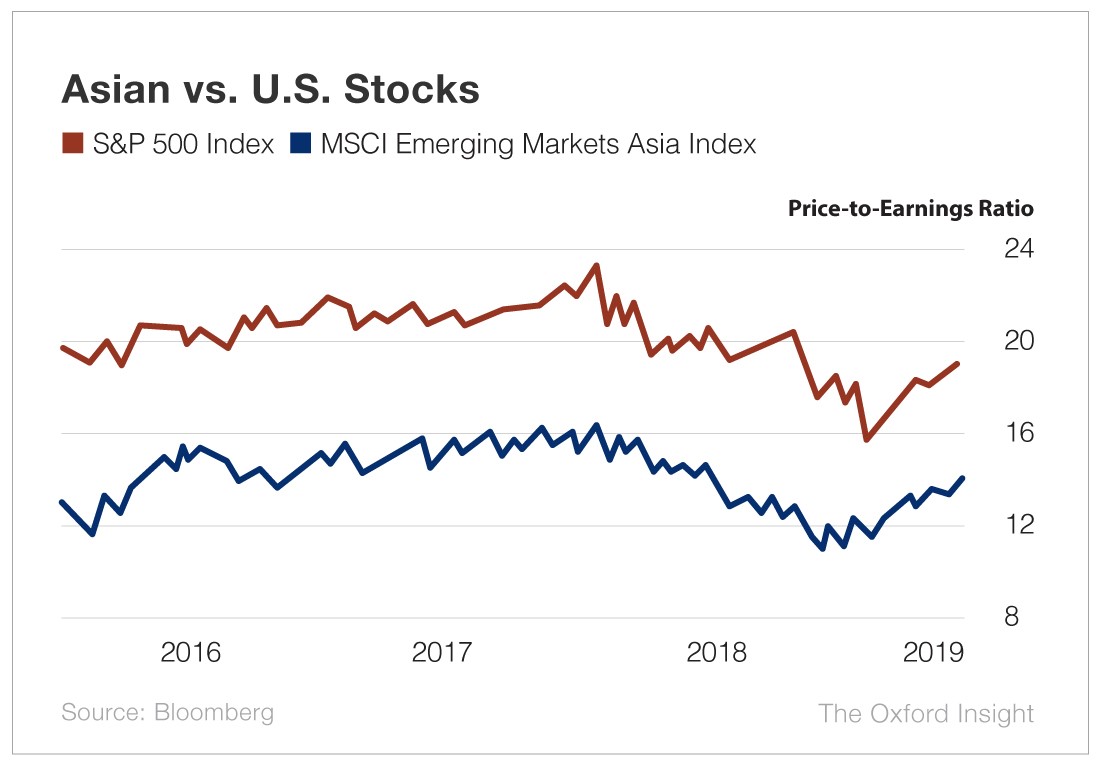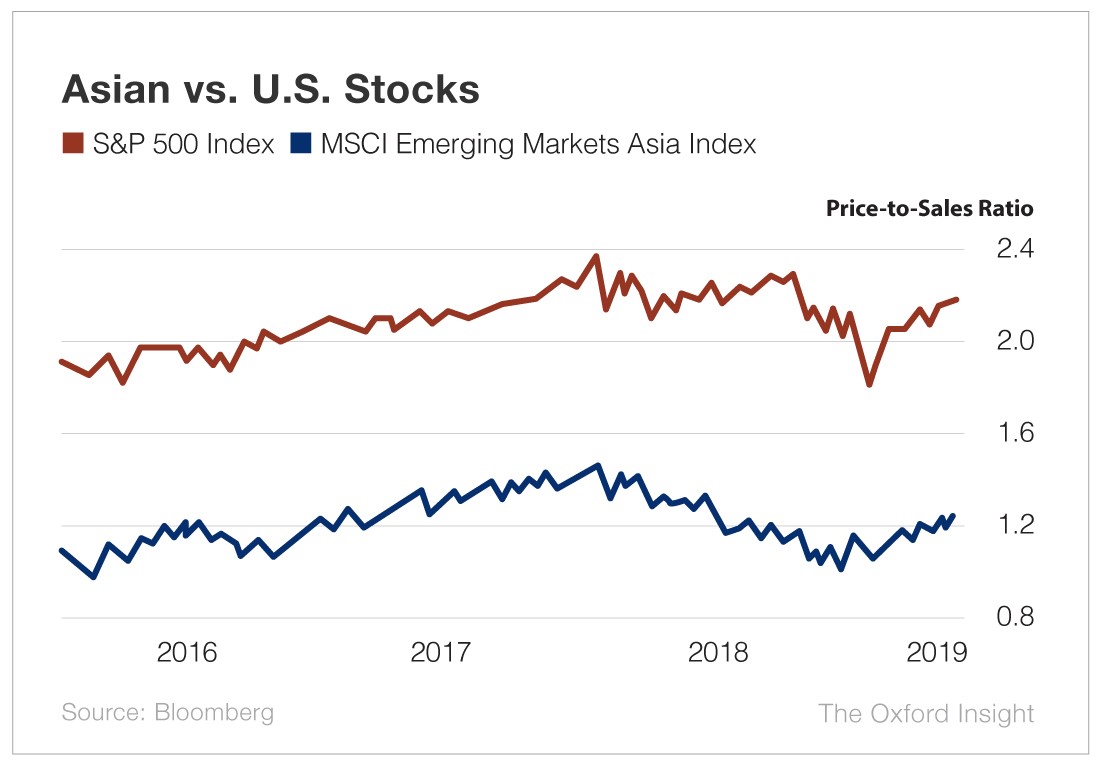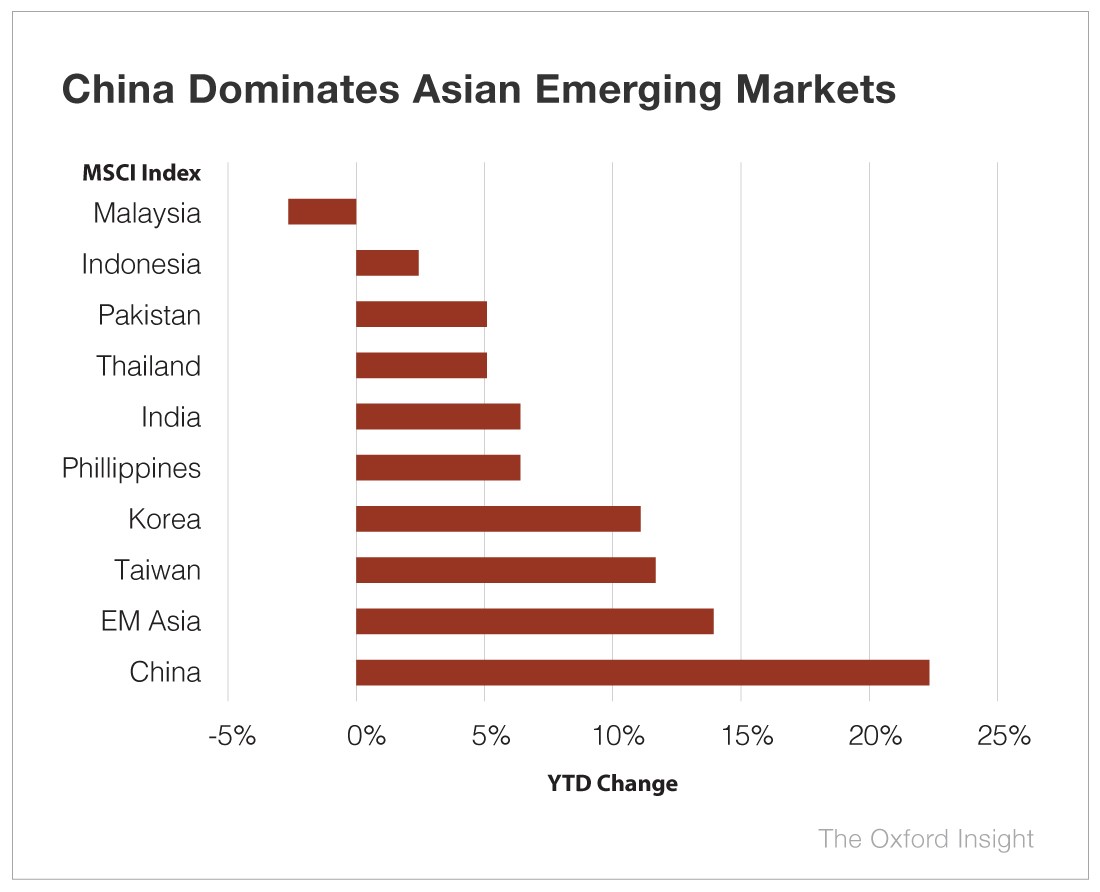Seeking Big Stock Gains at Cheap Prices? Go Abroad
From the Baltimore Clubhouse – It’s been said that all good things must come to an end. But you could mistake this stock rally as evidence to the contrary.
We are now riding the longest bull market – and the second-longest economic expansion – in U.S. history.
Historically, the average U.S. bull market lasts about 6 1/2 years. Last month, the current bull market celebrated its 10-year anniversary.
By that measure, we’re long overdue for a bear market.
Now, with stock market indexes nearing – and preparing to top – their all-time highs, the prospect of a looming bear market may seem doom-and-gloomy.
But is it?
We’ve also seen a number of indicators begin to point toward a coming recession within the next 18 months, including an inverted yield curve, slowing global and U.S. economic growth forecasts, and recent activity in the precious metals market.
All of these signs warrant some caution on the part of investors.
Simple prudence demands that investors begin reducing their portfolio risk now in preparation. One way to do this is to focus more on value.
I’ve written in the past about the importance of seeking value in a late-stage bull market.
While growth stocks can appear more attractive, buying value can set up your portfolio with a strong defense in preparation for a potential bear market.
But that doesn’t mean you have to sacrifice performance for precaution. Put another way, seeking value does not have to mean abandoning growth.
In fact, it’s possible to have both.
How? Consider looking abroad. (If you follow our investment philosophy, you likely already do.)
For example, the Gone Fishin’ Portfolio – the core portfolio of our Oxford Wealth Pyramid – recommends a 30% asset allocation into non-domestic stocks.
But where abroad should investors look for growth at a reasonable price?
Asian emerging markets have become a strong place for equity performance while also providing great value for investors.

Currently, Asian emerging market stocks – as tracked by the MSCI Emerging Markets Asia Index – are undervalued compared with U.S. stocks, trading at a near 27% discount to the S&P 500.
Yet recently, these stocks have delivered similar gains to domestic equities. For example, the S&P 500 has gained 16% this year, and Asian stocks have followed closely behind, gaining about 14%.
If you consider price-to-sales ratios, the valuation gap is even more stark.
Asian stocks currently trade at merely 1.2 times sales, while U.S. stocks trade at 2.2 times sales.

By either metric, Asian stocks are far cheaper than U.S. stocks. And they provide a unique opportunity for value-focused investors to still profit from strong growth.
But Asian markets are not monolithic. In fact, when we look deeper, we find that a bulk of Asia’s performance is coming from one country in particular…
As you’ve likely guessed, that country is China.

In the above chart, you can see the year-to-date stock market performance of each nation included in the MSCI Emerging Markets Asia Index. Note that this excludes Japan, as it’s considered a developed market.
As you can see, Chinese stocks have delivered more than double that of other Asian emerging markets.
That shouldn’t come as much of a surprise, as China has the largest economy in the region by far.
But China has also seen remarkable stock market performance relative to U.S. markets – beating out domestic stocks by 40% so far this year.

Yet Chinese stocks are trading at a 32% discount to U.S. stocks, based on the price-to-sales ratio.
With all this data in mind, it’s clear that investing in Asian emerging markets – specifically China – provides a great opportunity right now to get in while the getting’s good (and cheap).
Good investing,
Anthony